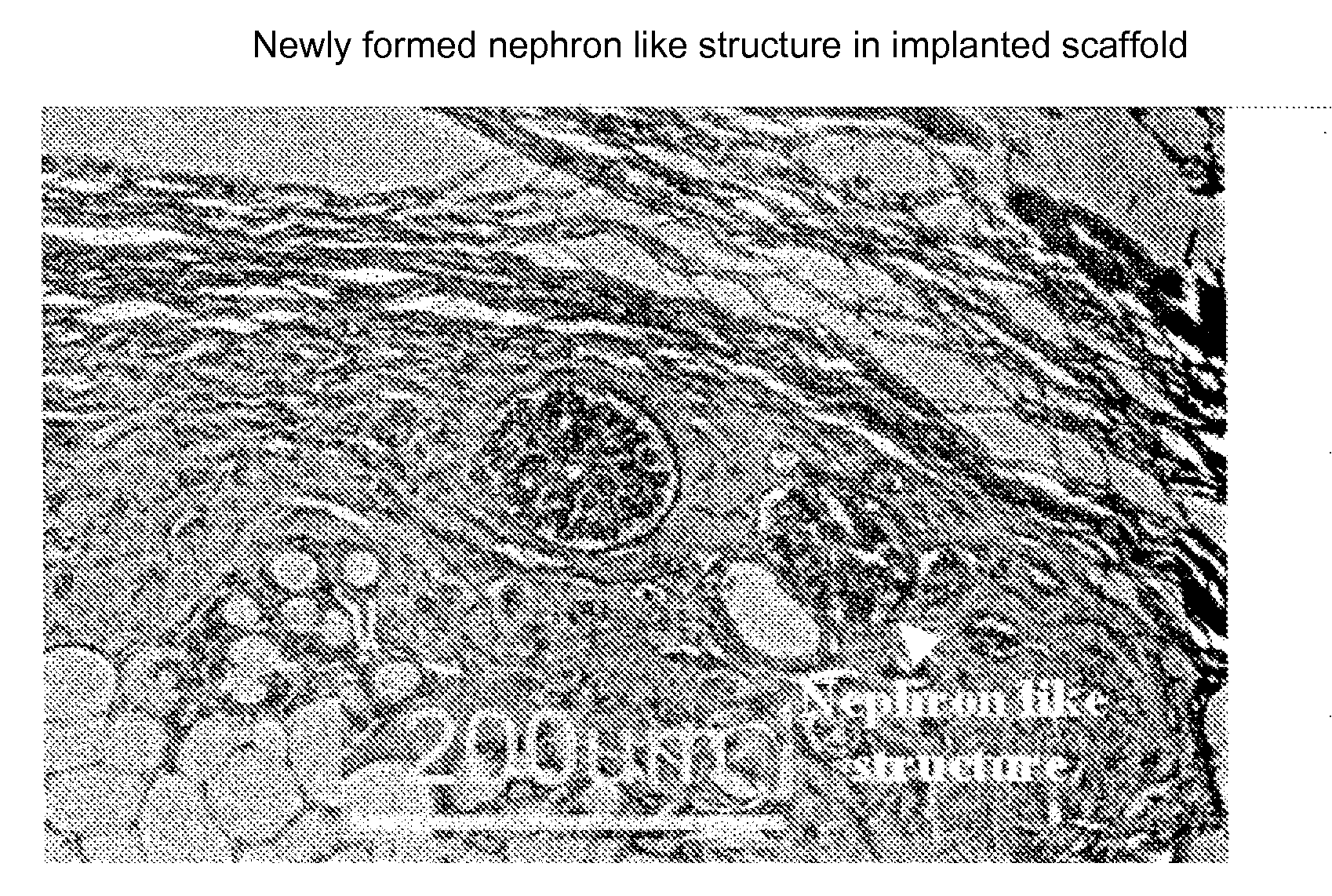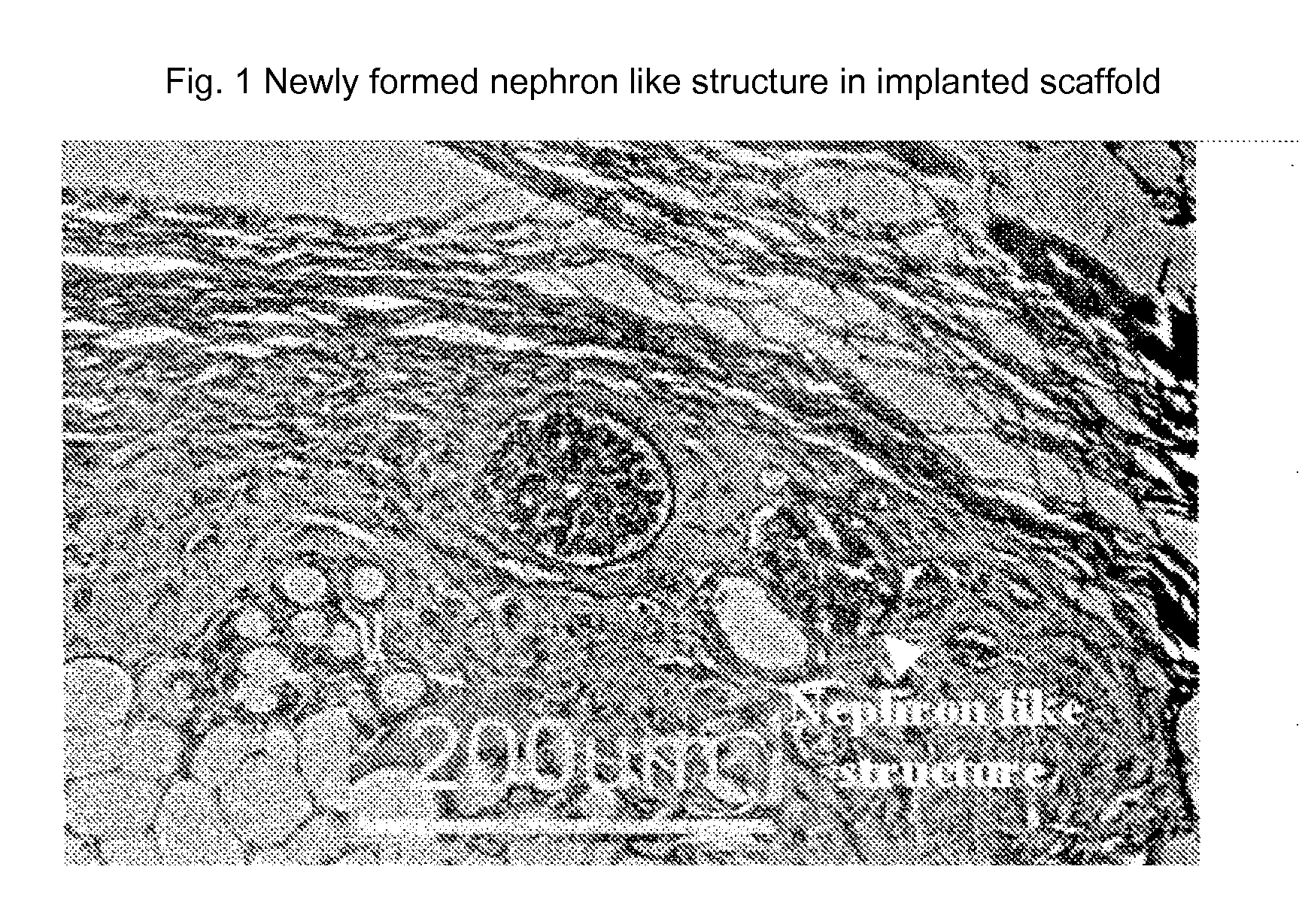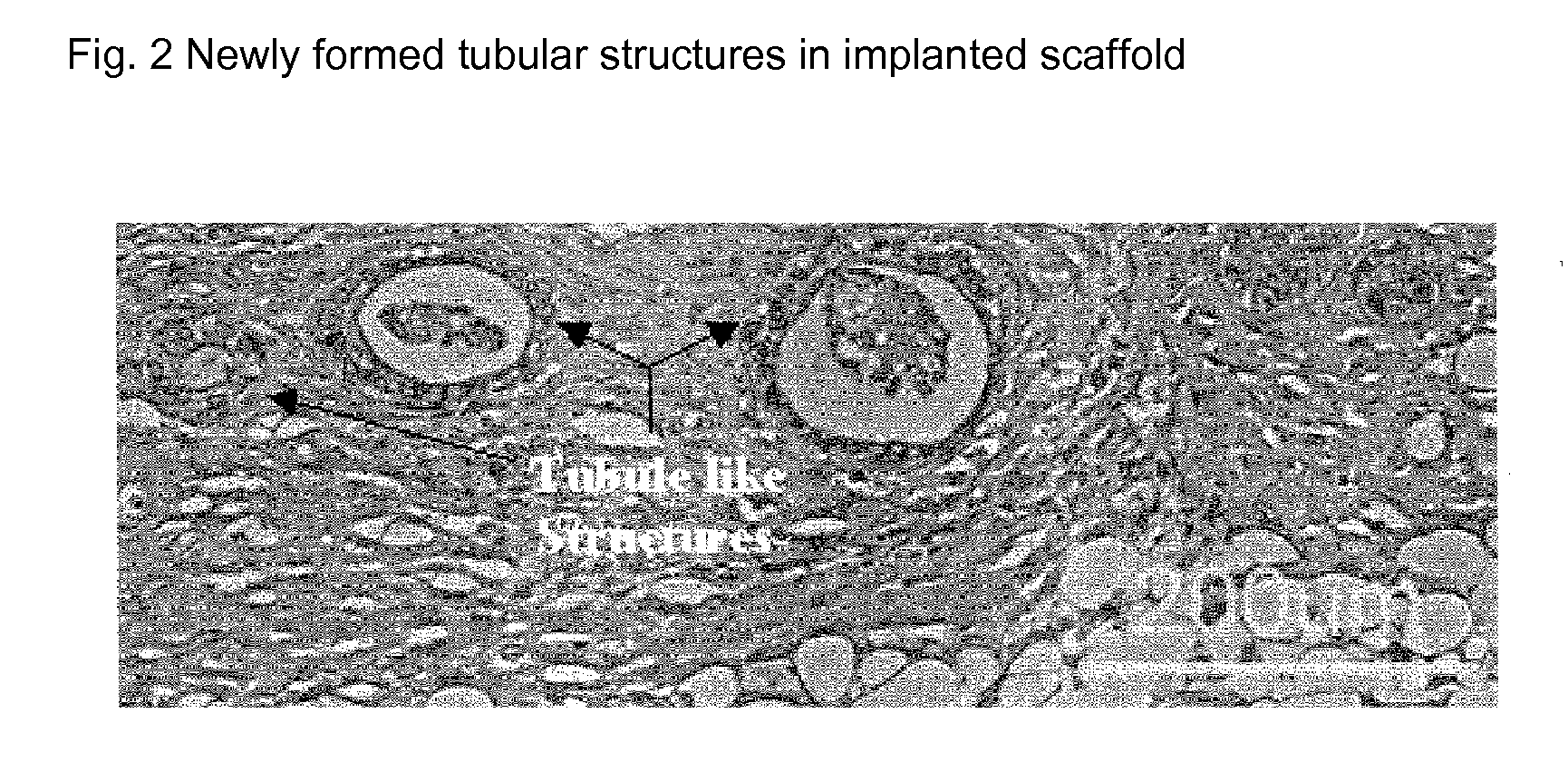Engineered Renal Tissue
a technology of kidneys and tissue, applied in the field of tissue engineering of kidneys, can solve the problems of inability to meet the needs of patients, etc., and achieve the effect of rapid augmentation of implantable scaffold materials
- Summary
- Abstract
- Description
- Claims
- Application Information
AI Technical Summary
Benefits of technology
Problems solved by technology
Method used
Image
Examples
example 1
Tissue Preparation from Kidney
[0060]Healthy kidney tissue samples of approximately 5 cubic mm each were obtained from a porcine source as follows. The kidney tissue was dissected open using a scalpel and tissue was harvested independently from the regions of the cortex and the medulla. The harvested tissues were then rinsed three times in a 50 ml Falcon tube with 5 times the tissue volume with phosphate buffered saline (PBS, Invitrogen, Carlsbad, Calif.). Each wash was for 30 minute duration to remove blood cells before being separately minced in surgical trays by repeatedly chopping and slicing with scalpels until the average particle size was about 500 microns, and no particles were larger than about 1-mm. A section of nonwoven PGA / PLA (90 / 10) bioresorbable polymer material (Lot # 5213-43-2 from Albany International, Mansfield, Mass.) about 2-mm thick was prepared for use as a scaffold by punching out a 6-mm diameter disc using a core biopsy punch. The scaffold disc was soaked in ...
example 2
Tissue Preparation from an Alternative Tissue Source
[0062]Alternatively, one can take a living tissue sample from a site within the body that is not the same as the desired tissue targeted for repair or regeneration and use it to generate the desired target tissue. For example, one can take a tissue sample from epithelium, such as from the salivary gland, skin, liver, lung, etc., mince it, and add to the minced tissue bioactive agents such as drugs, anti-inflammatory agents, proteins, enzymes, growth factors, morphogens, bone morphogenetic proteins, cells, stem cells, progenitor cells, mesenchymal stem cells, embryonic stem cells, renal stem cells, bone marrow aspirate, platelet rich plasma, demineralized collagen, SIS (small intestine submucosa) to ultimately influence the cells in the minced tissue to differentiate or de-differentiate, grow and multiply to develop into a desired tissue type, such as a kidney tissue. The minced tissue with added bioactive agents would be applied to...
example 3
Preparation Using Culture Medium
[0063]Healthy kidney tissue samples of approximately 5 cubic mm each are obtained separately from the cortex and medulla regions of a kidney. The harvested tissues are placed in separate surgical trays and rinsed with phosphate buffered saline (PBS) and then separately minced until the average particle size is about 500 microns, and no particles are larger than about 1-mm. The size of the tissue particles will vary, but on average should be approximately 500 cubic microns, and no larger than 1 cubic mm. The minced tissues are then distributed uniformly on opposite sides of a synthetic bioresorbable scaffold that has previously been pre-soaked for up to 4 hours in culture medium. The polymer scaffold loaded with minced tissue is then coated with fibrin glue, allowed to cure, and then placed into the medulla of a host kidney in need of renal therapy. The implant is then fixed in place using sutures, with care being taken to ensure intimate contact of th...
PUM
| Property | Measurement | Unit |
|---|---|---|
| size | aaaaa | aaaaa |
| size | aaaaa | aaaaa |
| size | aaaaa | aaaaa |
Abstract
Description
Claims
Application Information
 Login to View More
Login to View More - R&D
- Intellectual Property
- Life Sciences
- Materials
- Tech Scout
- Unparalleled Data Quality
- Higher Quality Content
- 60% Fewer Hallucinations
Browse by: Latest US Patents, China's latest patents, Technical Efficacy Thesaurus, Application Domain, Technology Topic, Popular Technical Reports.
© 2025 PatSnap. All rights reserved.Legal|Privacy policy|Modern Slavery Act Transparency Statement|Sitemap|About US| Contact US: help@patsnap.com



